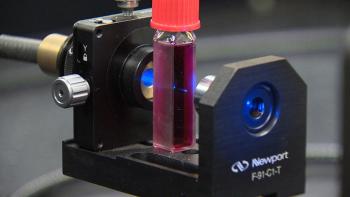Light induced magnetoresistive random-access memory (LI-RAM) is based upon a breakthrough material developed by a chemist from the University of Victoria, in Canada. LI-RAM allows computer memory chips "to exist at a molecular level," according to the university blog. The new material is designed to facilitate faster, more durable, more efficient memory for mobile phones, computers and other devices. Furthermore, it has the potential to break down the 'power wall' - the problem of heat and electrical consumption - hampering faster processing and causing environmental concern.
Materials chemistry Professor Natia Frank is credited with the development of LI-RAM. "The material in LI-RAM has the unusual quality of rapidly changing magnetic properties when hit with green light," said Frank. Thus information can be processed and stored at a molecular level. LI-RAM could well be a 'universal memory' solution, combining "the cost benefits of DRAM, the speed of SRAM, the non-volatility of flash memory, and infinite durability". This should mean less e-waste if it gets adopted widely, in addition to its operational energy efficiency benefits.
Natia Frank (right) with PhD student Aiko Kurimoto with early stage prototype devices.
The coloured flasks to the far right contain two versions of the switchable material.
Prof Frank has filed a patent application for LI-RAM and is working on commercialising and optimising the technology with international electronics manufacturers. The various firms are likely attracted by the promise that, compared to standard memory chips, LI-RAM uses "10 per cent less power, creates almost no heat and has higher durability—all while processing information faster". Beyond memory applications, Frank foresees applications for LI-RAM technology in medical imaging, solar cells and a range of nanotechnologies.
As is often the case, though commercialisation is underway, we might be some way off seeing LI-RAM in shipping devices. It is expected that consumers will be able to buy LI-RAM memory architecture devices within approx 10 years.
For further information about LI-RAM please check out the UVic blog, and you can read excerpts from an interview with Natia Frank on CFAX 1070 radio here.









